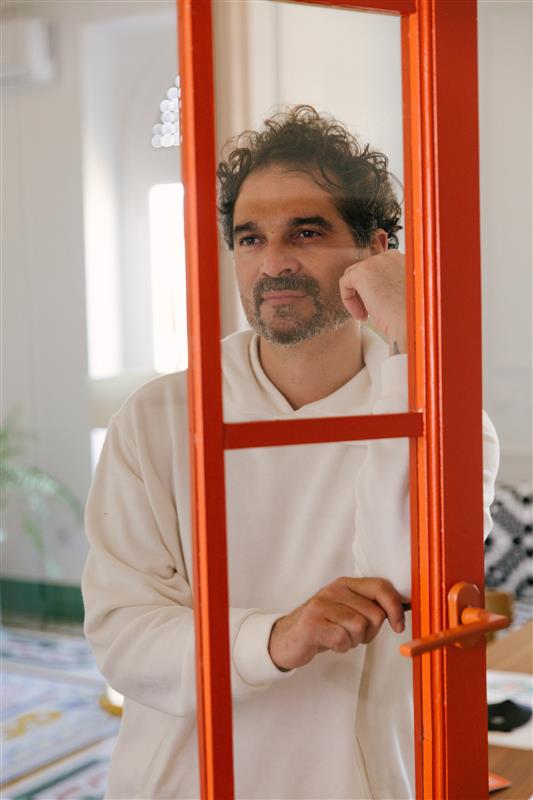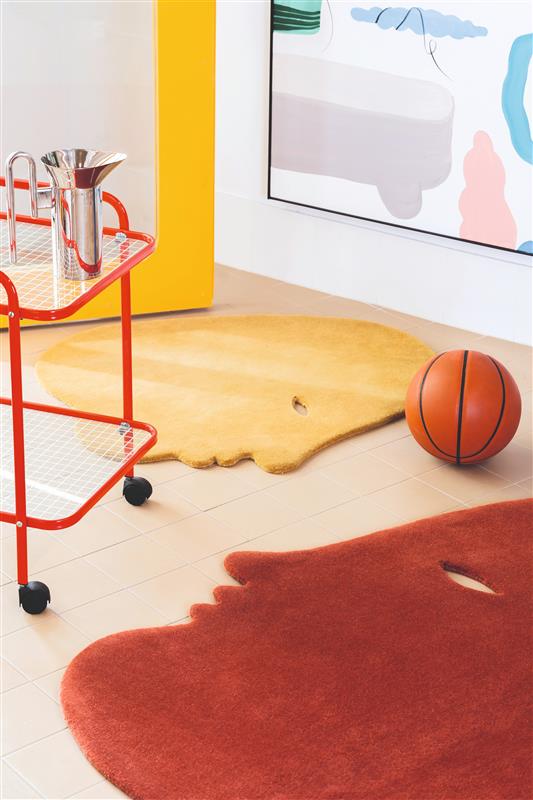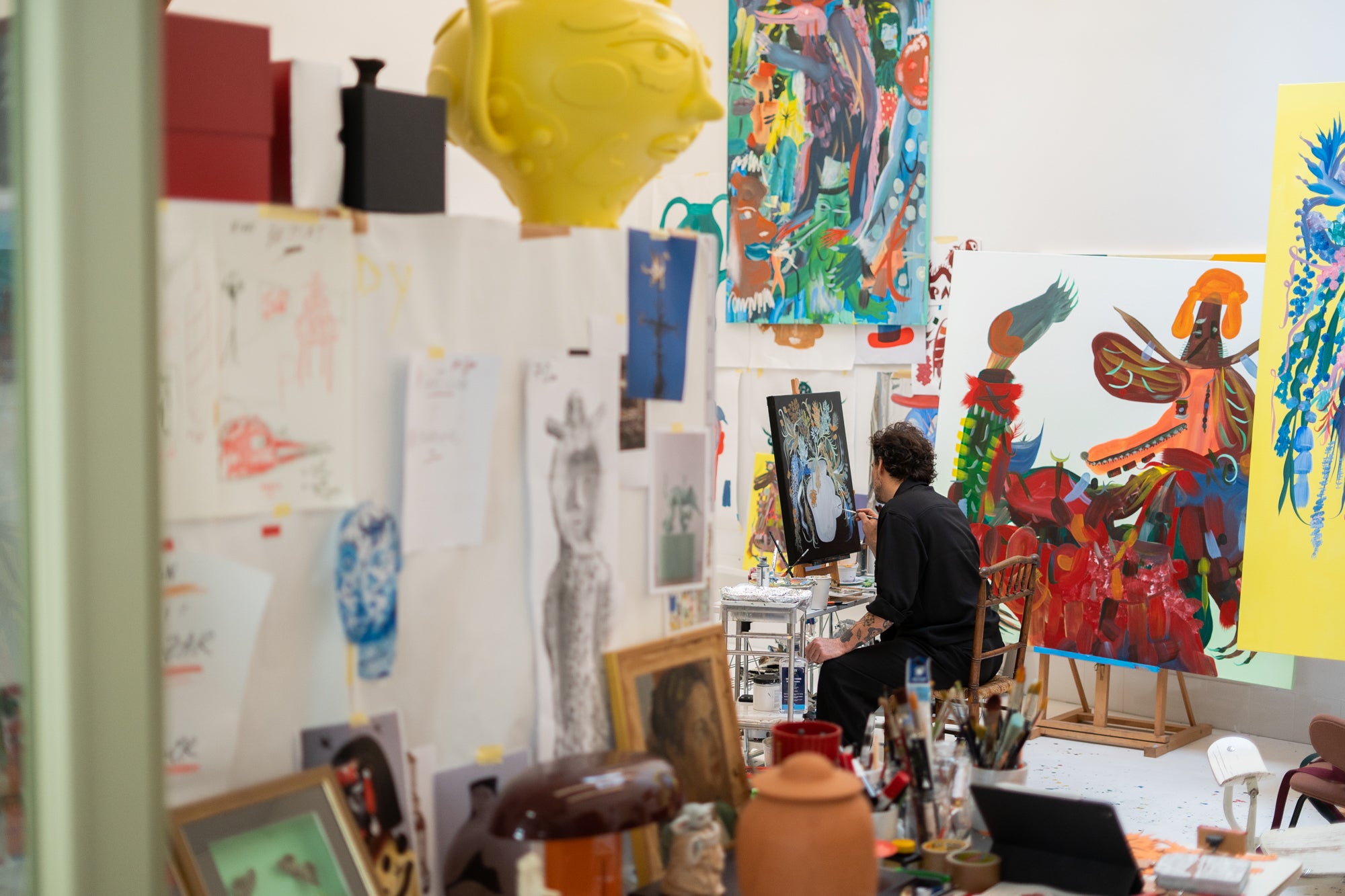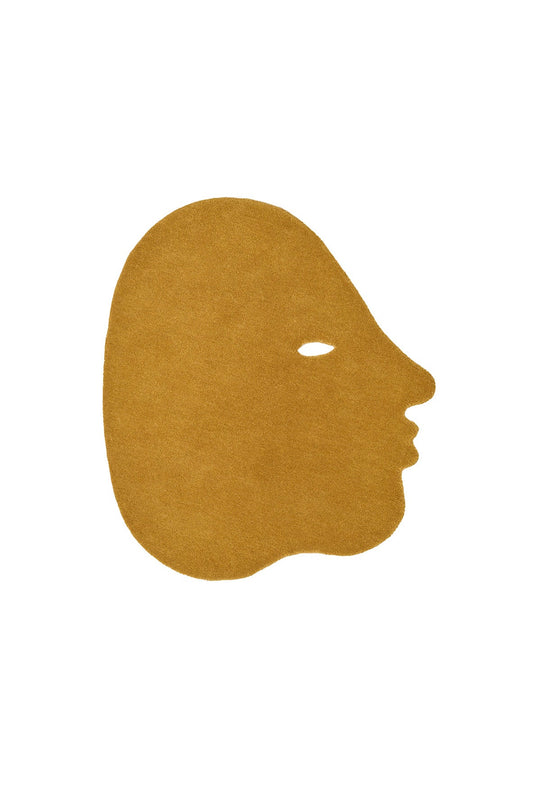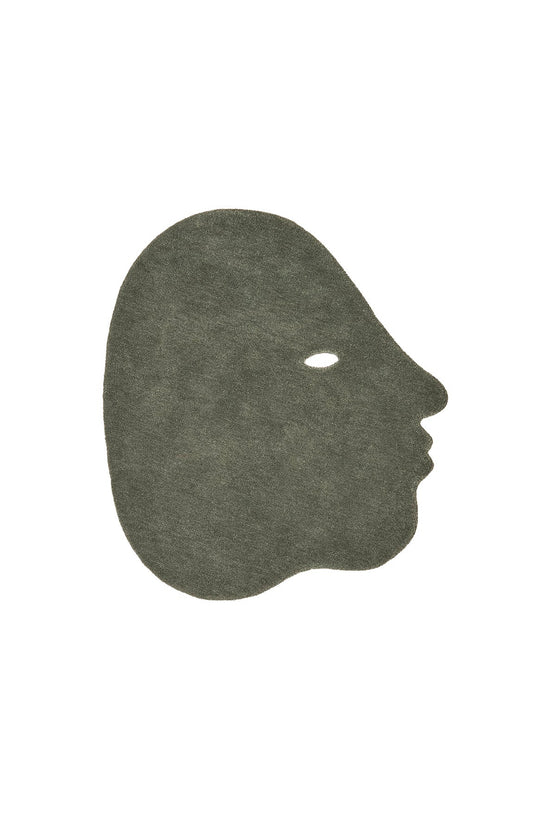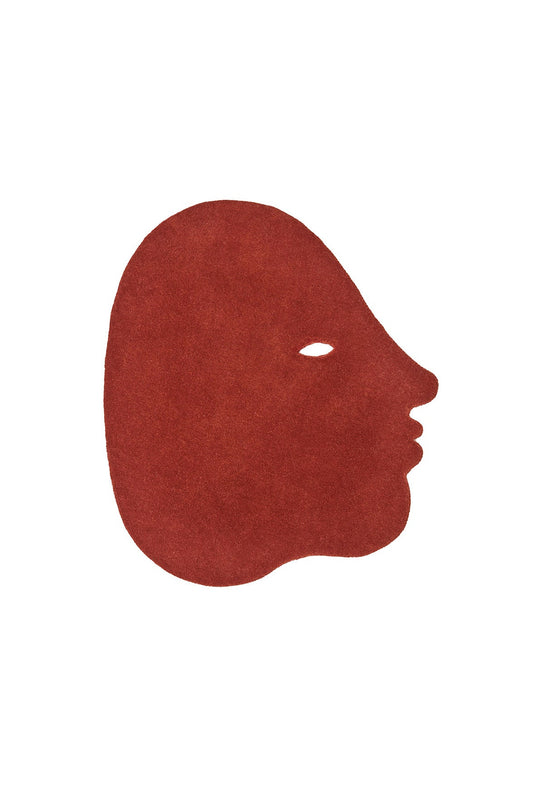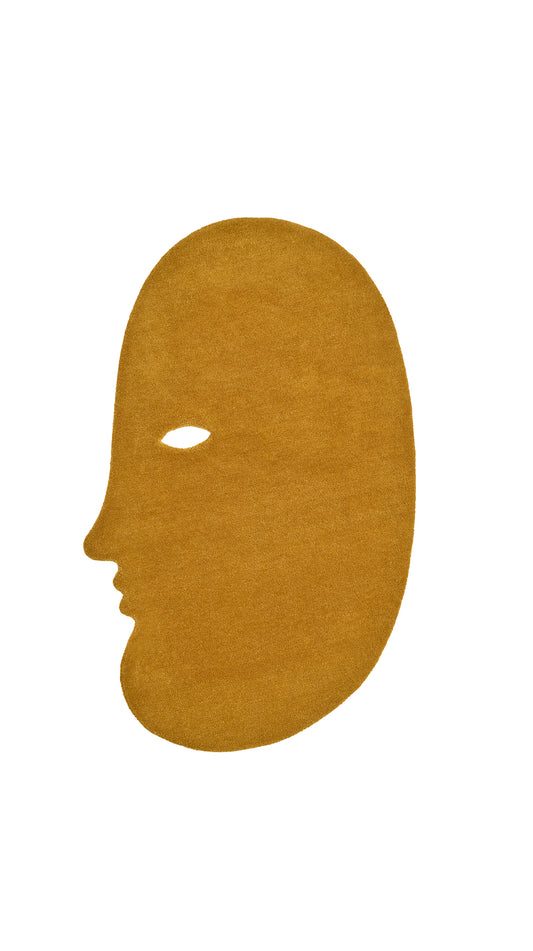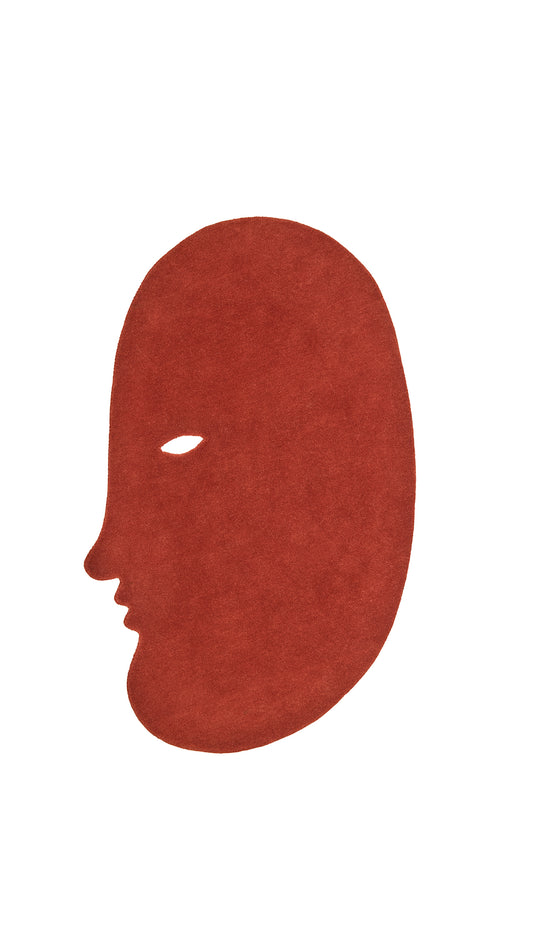An informal talk with Jaime Hayon
An informal talk with the artist about Talk Talk, the new collection he is launching with Nani Marquina.
Your relationship with Nani Marquina goes back years. In fact, this is the fourth collection you’ve designed for the brand. What would you highlight about this relationship? What makes it special?
JH: My relationship with Nani Marquina is based on mutual admiration and a deep connection with craftsmanship and experimentation. From the beginning, we have shared the vision of exploring new forms within the world of rugs, always striving to bring something different. Nani and her team have an exceptional sensitivity to materials and processes, which has allowed each collaboration to be an enriching dialogue between my creative universe and their textile expertise.
In previous collaborations, the rug was used as a canvas. What has changed? The approach is now closer to product design rather than just designing a rug.
JH: In this collection, the rug is not just a graphic support but a three-dimensional object that defines space. The focus has been on volume, texture, and depth, moving away from a pictorial concept towards a more architectural exploration. The design is not limited to an image; instead, it offers a sensory and structural experience within the environment.
There is also a beautiful aspect to this collection: the rug takes the shape of a human silhouette, creating a sort of shadow in the space. This adds a more surreal dimension and allows the rug, with a bit of imagination, to adapt and create a magical moment in its surroundings.
The scale of the product has also changed. How can this rug be used? Composition/system to define spaces.
JH: This collection introduces a modular and versatile approach. It is not just a single rug but a system that allows for compositions based on the space and the user’s needs. It can define areas, add depth to a room, or even function as a sculptural element within a home or public space.
Color selection is a highly sensitive value for both you and Nani Marquina, and this is the first time you have designed a fully monochromatic product together. How were the colors chosen?
JH: As an artist and designer, color has always been a key element in my work. In this case, the decision to work with a monochromatic palette stems from a pursuit of purity and timelessness.
To choose a color, one must truly understand how it works. Through the paintings I have been developing in recent years, I have come to realize more and more that color must be essential in capturing emotion and adding greater narrative depth. In this collection, we have explored shades that emphasize texture and form, where light plays a fundamental role in the perception of the design. It was a meticulous selection process, in which each hue needed to add depth without relying on graphic contrast.
Was this collection designed by a designer or an artist?
JH: I don’t see a difference between art and design; it’s simply a matter of function. When it comes to a rug, this distinction is even less significant, as one—like myself—uses a pictorial element from their own universe to establish order in space and create a magical moment. In this sense, the collection does not fit into a specific category but rather represents a creative exploration that naturally blends both disciplines.
